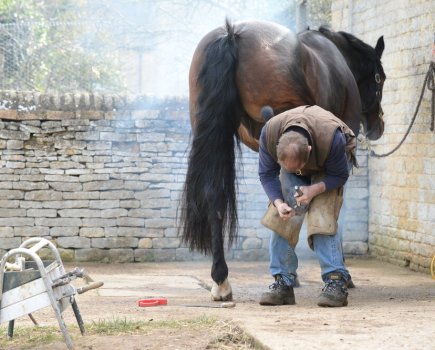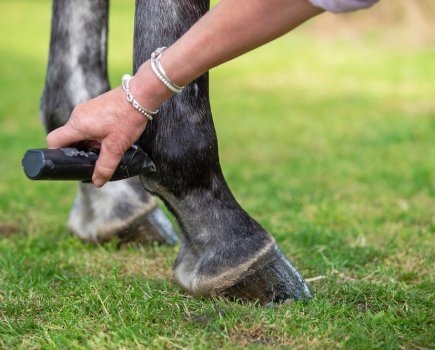With lockdown easing, many horse owners will be sprucing up their tack ready to get back in the saddle, or perhaps preparing to up their horses workload.
After a period of rest, your horse will need to go through a phase of recuperation to regain fitness, strength and build up muscle, all of which require a suitable diet and exercise.
As your horse’s workload increases, he may need additional energy from his feed. Introduce extra carbohydrates slowly, over a number of days, to allow the digestive system to adjust, and avoid unwanted weight gain or exuberance.
Plan your exercise
- When getting your horse back into work, or upping his workload it’s important to follow an appropriate exercise plan.
- Often exercise plans will start with walking, slowly built up over a number of weeks to include hill work, polework, and core muscle exercises in the stable.
- As with altering his feed, it’s important to not make too many drastic changes at once to his exercise regime.
- Keep a close eye on his weight and fitness levels, to ensure you aren’t pushing him too hard, and to be able to notice when you can go that bit further.
- The time it takes to get back to a basic fitness level varies according to your horse’s age, his type or breeding and how fit he’s been in the recent past.
Well prepared
Performance coach Marie Ryan believes that it is our job as riders to ensure our horse is fully prepared for what we’re asking of him.
Begin with LSD
“Depending on your horse’s starting point, you ideally need to spend two to four weeks in walk, gradually building up the time,” says Marie. This is ‘long, slow, distance’ work. “Start off by doing half an hour, building up to one to 1.5 hours a day.”
If he’s feeling fresh…
“Try gently lungeing or loose-schooling for a few minutes in an enclosed area on safe footing to allow him to get rid of any excess energy. Hopefully, after a few days of this, he will settle into the routine.”
Quality over quantity
Your horse’s walk should be active and rhythmical. Even if he isn’t truly on the bit, at least have him working towards being on the bit, with a pliable contact for him to work into so he begins to build the correct muscles.
Introduce the arena
Over the next few weeks, introduce arena work, riding large figures such as figure of eights, 20m circles, three-loop serpentines, changes of diagonal.
“Leg-yield and shoulder-in adds variety and builds suppleness.”
Start slowly
A schooling session is a lot more strenuous than hacking out in straight lines. Start sessions at no longer than 15 minutes, building up to between 30 and 45 minutes.
Bring in trot
“Start small periods of trot, both out hacking and in the school,” suggests Marie. “It should be an easy, rhythmical working trot, starting with short bursts and slowly increasing.”
Find some hills
Introduce gentle hill work. “Hill work is excellent for strengthening and conditioning,” explains Marie. “Walking, or slow cantering uphill (on a suitable surface), provides a useful workout for the cardiovascular system and creates a stronger core and toppling if you work your horse in the correct outline.
“Depending on the gradient, walking and trotting downhill, using plenty of transitions within the pace, can help to develop balance, engagement and core strength, as long as correct outline is established.” If you live in a flat area, introduce interval training to compensate for the lack of hills.
Lungeing works too
If you have access to a flat field or arena, lunge in walk and trot. Keep the circles large. Start with five minutes, building up to 10.
“Using a Pessoa or Equi-lunge training aid, improvements can be made to self-carriage, obedience to the voice and engagement. It’s particularly useful if you’re short on time.”
Canter on
If all is going well, introduce short periods of canter on good ground. “Ensure the canter is balanced and rhythmical so your horse is working correctly and building the right muscles,” adds Marie. “Work on straight lines to start with and don’t forget transitions.”
Increase the effort
The final stage is to increase effort and duration of work. Schooling sessions (three to four per week) become more frequent and demanding. Polework and jumping can also be introduced. Start small and build up as your horses’ fitness and confidence grows.
Don’t miss the latest issue of Your Horse Magazine, jam-packed with training and veterinary advice, horse-care tips and the latest equestrian products, available now.









